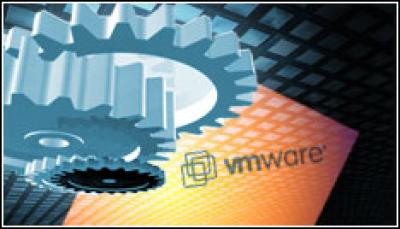VMware has launched an “on-ramp” which gives businesses a free start in virtualising their servers.
The virtualization giant has added features to Go, its Web-based service, so small to medium-size businesses (SMBs) can install the VMware hyperviser, ESXi, automatically, and start running their applications on virtual servers. The new Go features, developed in partnership with Shavlik Technologies, also let companies move existing virtual machines (VMs) from VMware Server to the more scalable ESXi platform.
Collective intelligence
 Virtualisation offers very clear benefits, but some users are reluctant to trust the technology – even though modern servers are all designed explicitly for virtualisation, and the technology saves power and money, boosts reliability and improves performance.
Virtualisation offers very clear benefits, but some users are reluctant to trust the technology – even though modern servers are all designed explicitly for virtualisation, and the technology saves power and money, boosts reliability and improves performance.
Another new feature of Go is Collective Intelligence, which helps guide a customer’s virtualisation experience by aggregating user data to show virtualisation best practices. With Collective Intelligence, users can view what other users have done in each stage of the virtualisation process so they can improve confidence while making virtualisation decisions.
Users can also see reports and dashboards with information such as the average number of VMs users are creating per ESXi server, the top five hardware types on which the community is running ESXi, or the top five virtual appliances that have been downloaded from Go.
“With the new features of VMware Go, we’re providing the easiest on-ramp to virtualisation for SMBs – at no cost,” said Manoj Jayadevan, director of emerging business and products at VMware. “Along with the ability to seamlessly migrate VMs from VMware Server to ESXi, the new Collective Intelligence guide for VMware Go makes it easier than ever to quickly realise the full benefits of ESXi and enable SMBs to maximize limited IT resources in just hours or days.”
Go simplifies the virtualisation process in three steps: Initial ESXi server setup, using collective intelligence guides, a built-in hardware compatibility check and automated migration, virtual machine migration, which allows users to leverage existing physical server configuration, install a prebuilt virtual appliance, or start with a new, clean virtual machine and lastly, manage ESXi servers and virtual machines with patch scan and remediation and monitoring.
Trevor Hart, vice president of marketing at Limos.com, a start-up limousine rental company, said his company chose to virtualise because it needed to run a number of server OSs, preferring to segment each business function into its own server. “Go got us up and running in days rather than weeks,” he said. “We chose virtualisation over separate physical machines to save both money and time spent, not to mention minimizing any compatibility issues.”
In March, VMware offered a fifty percent discount on its its VMware vSphere Essentials product package, in a promotion that ended last month.





